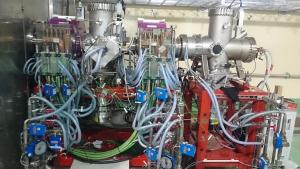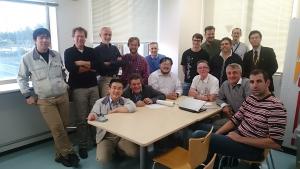Milestones at the IFMIF prototype accelerator
The Japanese Atomic Energy Agency (JAEA) has been responsible for the procurement of the LIPAc conventional systems, such as the accelerator building, the secondary cooling system, and the machine and personnel protection system. Europe's contribution, coordinated by Fusion for Energy, has been delivered by the European countries who are voluntarily contributing to the Broader Approach. The LIPAc injector was developed and manufactured by the French Atomic and Alternative Energies Authority (CEA Saclay). It has been successfully installed in Rokkasho, Japan, and is now under commissioning.



